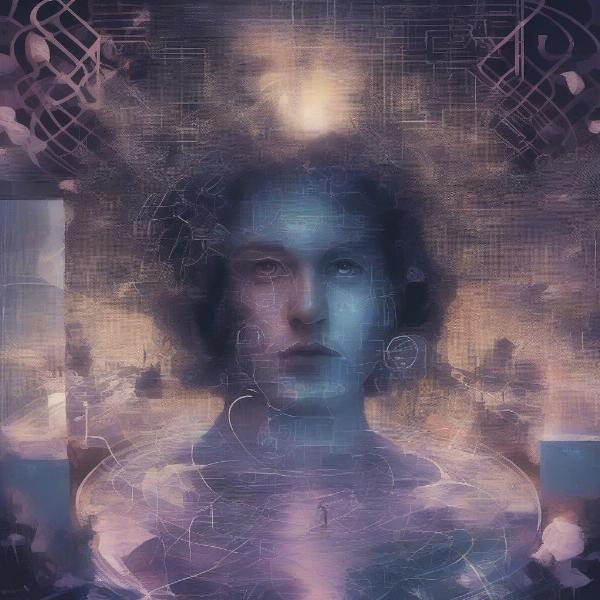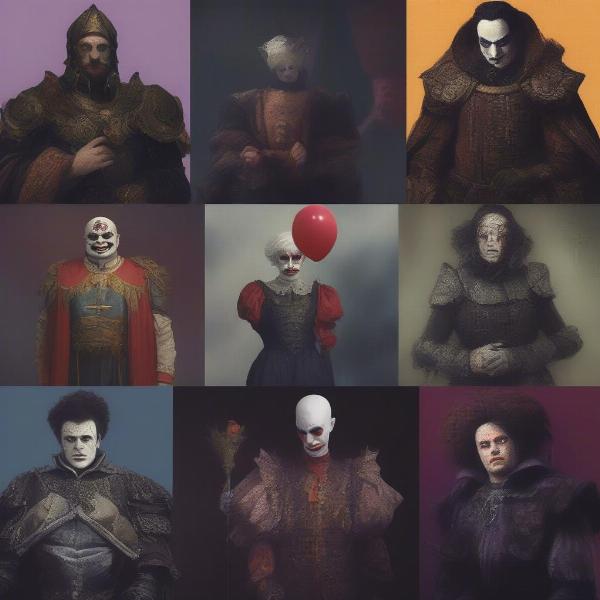Video game villains are more than just obstacles; they are the driving force behind compelling narratives and unforgettable experiences. At SupremeDuelist.blog, we delve into the core of gaming, and this time, we are exploring the dark side, analyzing what makes the Best Video Game Villains so captivating. From their motivations to their iconic designs, understanding these antagonists can elevate our appreciation for the games we play.
This article will not just list names; we will dissect the characteristics that make these digital foes truly memorable. We will also explore the different archetypes, examining their impact on the narrative and the player’s engagement. Join us as we journey through the most nefarious, cunning, and downright terrifying antagonists in the history of video games, understanding how they shape our gaming experiences. We’ll look into their impact, not just on the stories they inhabit, but also on the players who confront them.
What Makes a Great Video Game Villain?
The effectiveness of a villain goes far beyond their raw power. Several elements combine to create a truly exceptional antagonist. First, we have the motivation. What drives them? Is it a thirst for power, a warped sense of justice, or a tragic backstory that turned them to evil? Understanding these motivations makes them relatable, even if we disagree with their methods. For instance, villains in best storyline games ps5 often have richly detailed backgrounds, making their actions more understandable, if not forgivable.
Then, there’s the personality. Is the villain charismatic and manipulative, or are they brutal and straightforward? Their interactions with the protagonist and other characters define their presence in the game world. A truly great villain will challenge the hero not just physically but emotionally and morally. Lastly, their impact on the story is crucial. Do they genuinely raise the stakes? Do their actions leave a lasting impression on the game’s narrative and world? These are all crucial elements we’ll consider as we journey through the best antagonists in gaming.
![]() iconic video game villains design
iconic video game villains design
Iconic Villains Through Gaming History
Over the years, gaming has gifted us with a plethora of memorable villains. One such example is Sephiroth from Final Fantasy VII. His tragic backstory, coupled with his undeniable strength and twisted sense of purpose, makes him a complex and compelling antagonist. His actions are driven by a desire to avenge what he believes to be the betrayal of humanity, creating a sense of understandable, albeit warped motivation. This depth of character is a recurring trait among the most memorable gaming antagonists.
Another remarkable example of an incredibly complex villain, is The Joker from Batman: Arkham Asylum. He is more than just a chaotic force; he represents the hero’s personal demons and an almost nihilistic perspective on the world. The Joker challenges Batman on every level, forcing him to confront his own moral code and limitations, pushing the conflict well beyond a physical one. Similar to best superhero video games , the villain often defines the scope and intensity of the story.
The Psychological Masterminds
Many of the best video game villains excel not through physical strength, but through their ability to manipulate and control. These villains often delve into the psyches of the protagonists, making them doubt their own beliefs and actions. Think of antagonists like GLaDOS from Portal. Her passive-aggressive dialogue and mind games are far more unsettling than any physical threat could be. These psychological battles add another dimension to the game, moving beyond simply conquering an enemy to outsmarting a malevolent force.
Similarly, Andrew Ryan from BioShock is an example of a villain who embodies his distorted ideals. His manipulation of the residents of Rapture and his unwavering belief in his twisted philosophy makes him a chilling and compelling antagonist. Understanding their motivations through their psychological manipulation of their environment and characters is key to understanding the villain’s significance to the game and its message.
 villain using mind games in video games
villain using mind games in video games
The Impact of Villains on Gameplay
The impact of a great villain is not just in the story; it also affects the gameplay experience. Some villains serve as challenging bosses, testing a player’s skill and patience. Others function as antagonists who shape the player’s moral choices, forcing them to question their own actions. The presence of these impactful figures often elevates the whole experience, making gameplay feel more dynamic and engaging. In comparison to many of the best ps4 action games, the best villains can make an entire experience memorable.
For example, the nemesis system in Middle-earth: Shadow of Mordor creates individual orc captains, some of whom rise through the ranks to become recurring antagonists that the player has a very personal history with. This mechanic adds a layer of unpredictability to gameplay, making every encounter feel more consequential. The feeling of facing an enemy who remembers you and the previous battles you’ve had, drastically changes the overall experience and perception of the game world.
Archetypes of Villainy
Villains in video games often fall into several archetypes. There’s the “tyrant”, like Bowser from Super Mario Bros, who’s driven by pure power and domination. Then we have the “tragic villain”, like Arthas Menethil from Warcraft III, whose descent into darkness elicits some sympathy. There is also the “nihilist”, like The Joker, who is driven by the desire to cause chaos and destruction. Lastly we see the “manipulator”, like the aforementioned GLaDOS, who uses intelligence and wit to control the narrative.
Understanding these archetypes can provide insight into the design and purpose of the villain within the game. Each type of antagonist creates a unique challenge for the player and offers a different way to experience a story. These recurring tropes in villain design demonstrate the importance of archetypes in understanding why certain antagonist create lasting impressions on players.
 villain archetypes in gaming
villain archetypes in gaming
Why Do We Love to Hate Them?
Despite their often-malevolent intentions, great villains have a unique way of captivating us. The best antagonists are often the characters we love to hate. This fascination might stem from the thrill of overcoming their challenges, or perhaps, a reflection on our own inner battles. When facing a truly formidable antagonist, a player is often forced to push themselves and their skills to their limits. These trials elevate the gaming experience, and provide a true sense of achievement when the villain is finally defeated.
Furthermore, the best villains often expose our own moral compass, forcing us to consider the difficult choices they make and their motivations for doing so. Even though we know these characters represent the dark side of their stories, we often find something in their narratives to admire or learn from. As a result, many of the best video game characters are antagonists, who can often hold a far more complex and interesting characterization than the heroes they oppose.
Expert Insight
“A truly memorable villain challenges the player’s preconceived notions and forces them to think critically about their actions within the game’s world,” says Dr. Anya Sharma, a professor of game narrative design at the University of Arts. “The best antagonists aren’t just evil; they’re a necessary part of the story’s exploration of conflict and character development.”
“Many of the most effective villains provide the player with a distorted mirror, challenging them to see their own shortcomings or potential for corruption” adds Marcus Riley, a game design consultant with over a decade of industry experience. “This introspection can be very compelling, making the player invest even more deeply in their own journey and their opposing counterpart’s.”
The Future of Video Game Villains
The future of video game villains looks bright, as developers continue to innovate and explore new narrative techniques. We can expect to see even more complex and nuanced antagonists in the coming years, characters that challenge us in ways we haven’t even imagined yet. The evolution of technology and narrative tools means villains will only get more compelling and multi-faceted in their presentation and impact on the stories we love.
The rise of AI and machine learning may also play a significant role in how villains are developed, making their behavior more unpredictable and reactive to player’s actions. This can create an even more dynamic gaming experience where each playthrough with a villain will be unique and personal to each individual player. The use of procedural generation to create unique villain encounters may create new challenges and experiences for players who engage with these systems.
 villains in future gaming
villains in future gaming
Conclusion
The best video game villains are not just enemies; they are complex characters that challenge, engage, and often captivate us. From their tragic backstories to their cunning manipulations, these antagonists shape our gaming experiences in ways that few other characters can. By dissecting their motivations, designs, and impact on gameplay, we can gain a deeper understanding of their power. As we look ahead, we can only expect that these memorable characters will continue to define the stories we play and make a lasting impact on our gaming memories. Remember to keep coming back to SupremeDuelist.blog for all your gaming analysis and insight. Explore more in depth game design by checking out how other genres such as card games create memorable characters in best one player card games and how character design impacts those experiences.
Leave a Reply